- Home
- Georgette Heyer
Jennifer Kloester Page 3
Jennifer Kloester Read online
Page 3
Cutaway of a London house.
Whether a house was old or new, the layout was fairly uniform, with the main living areas on the ground and first floors, the bedrooms, schoolroom and nursery on the two floors above that, the kitchen, scullery, housekeeper’s and butler’s rooms and a sleeping area for the footman in the basement, the housemaids’ quarters in the attic and the wine and coal in the cellars. The living areas usually included, on the ground floor, an entrance hall, saloon, dining room and possibly a library or book-room. It was the Marquis of Alverstoke’s book-room rather than the saloon or drawing-room to which Frederica was escorted when she arrived at his town mansion in Berkeley Square in the company of two park-keepers and a shrill, ‘hatchet-faced’ woman. The drawing-room was on the first floor and was often a double room or adjoined by a saloon with double doors which could be opened to create one large room. On the next floor were the (usually separate) bedchambers used by the master and mistress of the house and, in more progressive households, possibly a bathroom like the lavish one installed by Jenny Chawleigh’s father in A Civil Contract. A dressing room adjoined each bedroom (although a man might sometimes have his dressing room located rather inconveniently on a separate floor) and ladies sometimes used their dressing room as a small daytime sitting room. Children’s bedrooms, the nursery and schoolroom were on the floor above and older boys and girls often had separate rooms. Very large houses sometimes had a ballroom on the ground floor at the back of the house which could accommodate several hundred people. Lord and Lady Ombersley of The Grand Sophy were hosts at a grand ball for five hundred invited guests which was held in the ballroom of their house in Berkeley Square. Lit by a magnificent candle-filled chandelier and decorated with flowers, the Ombersley ball was one of the great successes of the Season.
The living areas of most London town houses were furnished with large and small tables, various kinds of chairs, couches, footstools, chandeliers, candelabra, carpets, curtains, paintings, tapestries, objets d’art and the other accoutrements that enhanced the occupants’ comfort and were a way of subtly (or not so subtly) demonstrating degrees of wealth and status to one’s guests. Bedrooms were generally well-appointed suites, though more sparsely furnished than the living rooms with just a bed, wardrobe, chair, dressing table or washstand, a floor rug and a free-standing mirror. In April Lady Nell Cardross’s husband had her bedroom transformed into a romantic boudoir with rose-silk curtains around a magnificent tent bed and the adjoining dressing room hung with blue and silver brocade. Ladies sometimes had a secretaire or writing desk in their bedroom or small sitting room and a couch or daybed there as well for the occasional daytime repose.
Gracious living was the order of the day in the drawing-rooms
of many London town houses.
Every bedroom had its chamber-pot (placed discreetly under the bed for easy access during the night), and water-closets were becoming increasingly popular in upper- and wealthy middle-class houses. It had taken centuries to develop an efficient, workable toilet but in 1778 Joseph Bramah had patented his valve-operated water-closet and by 1797 had reportedly sold some 6,000 of them. In 1813 the Earl of Moira’s country house in Leicestershire boasted two bathrooms and six water-closets and his wife even had her own elegantly appointed personal bathroom and WC adjoining her dressing room. Jonathan Chawleigh’s passion for new inventions in A Civil Contract caused him to have the latest Bramah water-closet installed under a staircase in Adam and Jenny’s Grosvenor Street house. In houses without the modern conveniences, use of the chamber-pot (emptied out the window) or privy (a seat over a hole in the ground and located out the back of the house) continued to be used.
In Arabella the heroine rescued Jemmy the climbing-boy from his ruthless master.
Lighting was gradually improved during the Regency and from the early 1800s many upper-class houses used oil-lamps in addition to the traditional tallow and wax candles by which most homes were lit. Chandeliers and candelabra of all sizes used hundreds of candles to light ballrooms, drawing-rooms and dining rooms, while a single candle in a holder might be enough to light a bedroom. Gas lighting was introduced during the period and, although in 1821 the Prince Regent had gas installed at the Brighton Pavilion in order to light the decorative glass windows at night it was to be many years before the system was refined enough for widespread domestic use. Peregrine Taverner in Regency Buck was awestruck by the magnificent central chandelier above the dining table when he was one of several guests invited to the Pavilion for one of the Regent’s famous bachelor dinner parties.
Keeping warm, even in the grandest houses, could be challenging. Most rooms had a fireplace and fires were usually lit in the early morning in the bedrooms and after breakfast or, as required, in the main living rooms. Coal was the main form of fuel in the cities but fires were a most inefficient form of heating as much of the heat went straight up the chimney. In some houses fires were kept burning throughout the day only in the winter months and then only in the main living rooms of the house. In Cotillion miserly Mr Penicuik allowed only the smallest fires to be lit in the main rooms at Arnside even in the coldest weather which caused his ward, Kitty Charing, to be especially grateful for the unexpected luxury of a fire in her bedroom when she visited London. Winter temperatures often extended into autumn and spring and it was not uncommon in wealthy (and less penny-pinching) households for fires to be lit nine months of the year. In houses with several main rooms, chimneys had to be swept at least every three months and the narrow flues (about a foot in diameter) meant that small boys, known as climbing-boys, were often sent into the chimneys to clear out the accumulated soot. When a climbing-boy fell down the chimney in Arabella the heroine was horrified to discover the exact nature of the abuses endured by the seven-year-old Jemmy. An appalling practice, this form of chimney-sweeping saw many children under the age of eight abused, injured and killed, and from 1817 humanitarians intensified their efforts to make the use of climbing-boys illegal and have the custom abolished.
ON THE FRINGE: HANS TOWN AND RUSSELL SQUARE
Although in the eighteenth century Mayfair had still been home to builders, tradespeople and shopkeepers as well as the upper class they serviced, by the time of the Regency the area was felt by many to be the exclusive preserve of the acknowledged leaders of fashionable society and members of the aristocracy. For those families with fortunes made in commerce, trade or one of the professions and possessed by a burning ambition to enter polite society, the next best thing to a house in Mayfair was an address in one of the districts adjacent to that exclusive quarter. Upper Wimpole and Harley Streets to the north, Russell Square in Bloomsbury to the north-east and Sloane Street and Hans Town to the south were often chosen as suitable residential areas by those on the social fringe. Such a move could also be slightly problematic, however, as the Merrivilles discovered in Frederica, for in upper-class circles the revelation that a person had an address in Upper Wimpole Street, or one of these new estates—Russell Square and Hans Town were often stigmatised as new rich—could lead to social exclusion.
MORE MODEST DWELLINGS
Social standing within the middle class, where ranking was subtle and complex, was largely determined by the extent to which a household employed domestic help, purchased luxury goods and increased the amount of time free from work. Middle-class houses varied greatly in size and furnishings but even the smallest and most modest households were usually distinguished from those of the poorer classes by having more than two main rooms, a separate kitchen close to a water supply, and a single family with at least one servant as occupants. Furze Farm, owned by the young and handsome Mr Mudgley in The Foundling, was a moderately sized dwelling set in freehold land, large enough to house a family comfortably but decidedly middle class with the occupants doing much of the domestic and farm work assisted by a servant girl and a number of hired hands. Further up the middle-class ranks, houses could be as large as any of those owned by the upper class and with as many (or m
ore) servants to ensure that the upwardly mobile master and mistress of the house never did anything in the way of manual labour. The ability to hire servants and maintain a carriage and horses was an important indicator of social status—although it was not necessarily a reliable guide to a person’s class as evidenced by the huge retinue of servants and the several carriages and liveried footmen employed by the vulgar Jonathan Chawleigh in A Civil Contract. Industrialisation and overseas trade saw a marked increase in the range and availability of consumer goods and many among the growing and increasingly prosperous middle class became eager purchasers of clothes, household items, accessories, furnishings, utensils and furniture with which to enhance their houses.
During the Regency an income of £10,000 a year was enough to enable a member of the upper class to maintain both a country estate and a town mansion and afford all the pleasures of life that went with them. Hugo Darracott in The Unknown Ajax teased his cousin Anthea about her (expensive) desire to own, rather than rent, a London house in the event that she moved to the metropolis. A moderately sized town house in Mayfair could be rented for £1,000 a year and between 1810 and 1814 a comfortable town residence and the life to go with it cost approximately £3,000 for the year with half of that spent on food and wine, and about £500 each on servants, carriages and horses. In Frederica the opportunity to rent out their home in Herefordshire enabled the Merriville family to afford a London Season and, by practising careful economy, Frederica was able to ensure that she and her lovely sister Charis were as well-dressed as any in the ton. By the end of the period a family with an income of £1,000 a year could afford to keep five servants and a carriage and pair, while a family on £400 a year could employ two housemaids and keep a groom and a horse.
DOMESTIC STAFF
A great house owned by a member of the aristocracy, such as the Duke of Sale in The Foundling or the late Earl of Spenborough in Bath Tangle, might employ an enormous number of servants with (in addition to maids, footmen, coachmen, grooms, stable boys and gardeners) a personal household staff of a steward, butler, Groom of the Chambers, under-butler, housekeeper, dresser or lady’s maid, nursery or young ladies’ maid, chef or cook, agent-in-chief, valet, chaplain, governess, tutor-companion, head keeper, head gardener and even a confectioner or pastry-chef. Most upper-class families, however, managed with fewer servants than the number required for service in a ducal mansion. And a more usual retinue might include a butler, cook, valet, lady’s maid, several general maids, footmen, a scullery maid, possibly a page-boy, and the stable staff. Hero and Sherry in Friday’s Child decided that they could manage quite comfortably with just a cook, a butler, a valet, a personal maid, two abigails, a footman, a coachman, a couple of grooms and his lordship’s tiger, Jason. For a young man living in chambers in London—such as Captain Gideon Ware of The Foundling—a pleasant bachelor existence could be achieved with the services of just a cook, a valet, a maid and a groom.
Servants were an integral and essential part of Regency upper-class life, and their continual presence in almost every aspect of it was, at times, quite difficult for their employers. In April Lady Nell Cardross had to quell her brother Dysart’s irrepressible urge to discuss her personal affairs while they were travelling in an open carriage with both the coachman and the footman within earshot, and, in The Reluctant Widow, Lord Carlyon and his guests waited until the servants had left the dining room before they discussed a relative’s scandalous behaviour. Although a servant’s presence was largely taken for granted on waking, while dressing, at mealtimes, at social events and when travelling, it could also be a constraint as employers sought to keep their personal affairs to themselves or at least within the family or between friends. Lord Dolphington in Cotillion, aware that his coachman Finglass invariably reported his activities to the Countess, often had to resort to subterfuge to prevent the servant passing on information which might have incurred his mother’s displeasure. But there was little that went on within the walls of a large estate, a London town house or a suburban villa that was not known by at least one of the retinue of servants employed to run them and it was a rare employee who did not discuss an employer’s affairs—if not with everyone in the servants’ hall then at least with his or her peers among the staff. Items of interest overheard or discovered by one servant could quickly spread through the house, and frequently beyond, with interesting gossip almost always shared amongst the staff of London’s elite homes. In Sprig Muslin, the Earl of Brancaster’s pronouncement to his daughter, Lady Hester Theale, that she had received an offer of marriage from Sir Gareth Ludlow was quickly spread among the servants by the butler, the valet and two footmen.
Domestic staff were usually required to work long hours to ensure their employers’ comfort and the smooth running of the household, and valets and personal maids frequently had to wait up in order to attend to their master or mistress late at night. Some servants, such as Evelyn Fancot’s valet Fimber in False Colours and Sophy Stanton-Lacy’s personal maid Jane Storridge in The Grand Sophy often chose to stay up in order to attend their master and mistress on their return from a ball or night on the town. A wealthy employer might keep a large staff, all of whom were expected to be neat, clean, punctual and efficient in the performance of their duties and on hand around the clock or at their employer’s pleasure. Most servants’ work was hard, repetitive and boring. Footmen were constantly expected to fetch and carry, run errands and wait at table, maids toiled up and down multiple flights of stairs carrying coal scuttles and linen, grates had to be cleared, cleaned and polished and fires lit before breakfast, while general cleaning, polishing, mending and making were never-ending tasks.
Food and cooking were a major preoccupation during the Regency and it required a sizeable kitchen staff to provide throughout the day and evening the varieties and quantities of food which wealthy families had come to expect. Connoisseurs such as Sir Bonamy Ripple of False Colours were passionate about food and took great delight in trying new dishes, planning extravagant menus and selecting the best wines to accompany even a minor meal. Breakfast and dinner were considered the most important meals and it was customary to serve a large evening repast with several removes over a number of courses. Kitchen staff were confined to the basement with its bare stone floor, where they began work early and spent their day preparing food in Spartan conditions over a labour-intensive wood- or coal-fed open range and oven or—in more fortunate, modern households—a new closed stove such as the Bodley installed at Fontley Priory in A Civil Contract. After each meal the vast numbers of dishes, pots, pans and utensils had to be cleaned and scoured—often without the convenience of running water—then dried and put away ready for the next meal. Food had to be bought, prepared, cooked, served and cleared all without drawing any aspect of the work involved to the attention of the servants’ employer.
Many servants began life in domestic service at a young age, starting as a scullery maid or an odd-job boy and working their way up the ranks, with some of them reaching the exalted heights of butler or housekeeper. A strong sense of loyalty to a long-term employer was not unusual and personal servants, such as a lady’s maid or valet, often developed close relationships with their mistress or master. Lord Damerel’s valet in Venetia had stood by his master through many adventures and remained in his employ for years despite the erratic salary and Damerel’s wild moods and often scandalous behaviour. For many in the upper class there was a strong sense of noblesse oblige; an ability (held to be innate in anyone born into the aristocracy) to interact with the servant class in a way that allowed a degree of respect, friendship, and even affection, between master and servant. Even so, clear divisions between the classes were maintained in the relationship. In Bath Tangle there was a stark contrast between Lady Serena Carlow’s ease of manner when dealing with servants and the estate staff and that of her cousin Hartley who had unexpectedly inherited the earldom but was neither born nor bred to the role. It was not uncommon for servants to remain with one
family for their lifetime, growing old in their service until they were eventually pensioned off or, in some cases, retired to a cottage on the estate to live out the remainder of their lives as did the twins’ old nurse, Mrs Pinner, in False Colours.
As the commander-in-chief of the general domestic staff, the steward was responsible for employing all the male servants in the house, with the exception of his master’s valet. He kept the household accounts, ordered necessary household items, paid the bills, servants’ wages and expenses, and dealt with the local tradespeople. He earned about £40 a year, had his own room and did not wear livery but instead dressed in a dark coat and trousers, with a waistcoat and neckcloth.
The Groom of the Chambers was second in rank to the steward among the male servants. Although the role of Groom of the Chambers was becoming less common during the Regency he remained an important figure in many of the great houses where his main responsibility was to take charge of the guests and their servants during their stay. He ensured that visitors were properly attended to, knew the daily programme, and knew where they needed to be and how to get there. In The Foundling the Groom of the Chambers, Mr Turvey, relished the idea that the young Duke of Sale, having attained his majority, might fill the house with guests and thereby grant him the opportunity to demonstrate his talents.

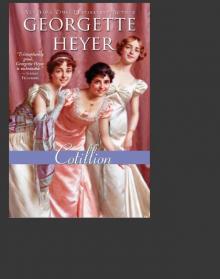 Cotillion
Cotillion Frederica
Frederica The Black Moth: A Romance of the XVIIIth Century
The Black Moth: A Romance of the XVIIIth Century Lady of Quality
Lady of Quality Snowdrift and Other Stories
Snowdrift and Other Stories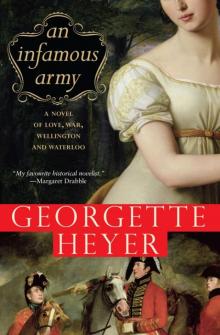 An Infamous Army
An Infamous Army The Talisman Ring
The Talisman Ring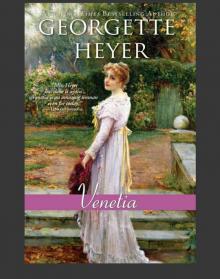 Venetia
Venetia The Quiet Gentleman
The Quiet Gentleman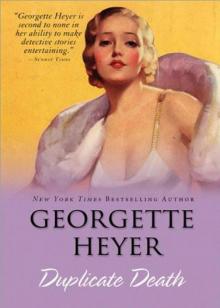 Duplicate Death
Duplicate Death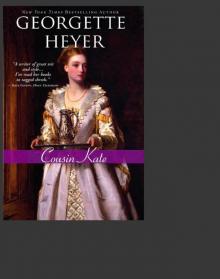 Cousin Kate
Cousin Kate Black Sheep
Black Sheep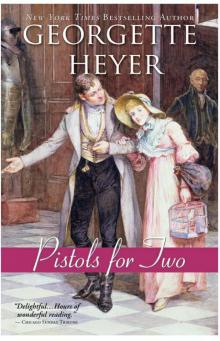 Pistols for Two
Pistols for Two Sprig Muslin
Sprig Muslin No Wind of Blame
No Wind of Blame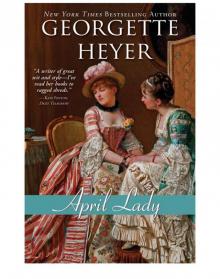 April Lady
April Lady False Colours
False Colours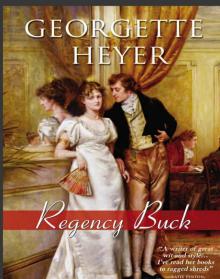 Regency Buck
Regency Buck The Toll-Gate
The Toll-Gate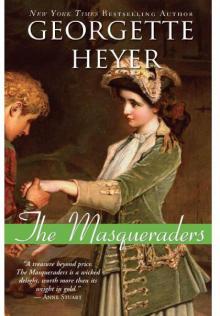 The Masqueraders
The Masqueraders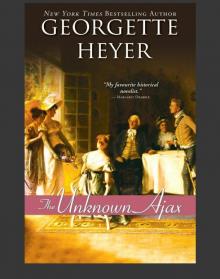 The Unknown Ajax
The Unknown Ajax The Grand Sophy
The Grand Sophy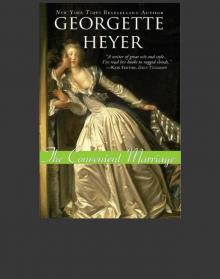 The Convenient Marriage
The Convenient Marriage Faro's Daughter
Faro's Daughter The Conqueror
The Conqueror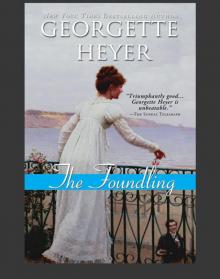 The Foundling
The Foundling The Black Moth
The Black Moth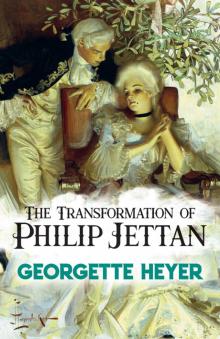 The Transformation of Philip Jettan
The Transformation of Philip Jettan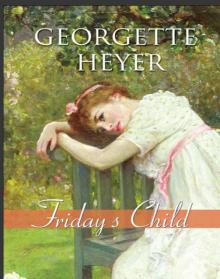 Friday's Child
Friday's Child Beauvallet
Beauvallet They Found Him Dead
They Found Him Dead Charity Girl
Charity Girl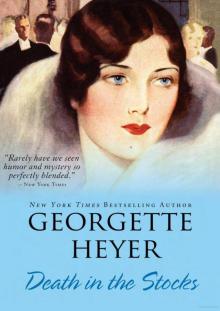 Death in the Stocks: Merely Murder
Death in the Stocks: Merely Murder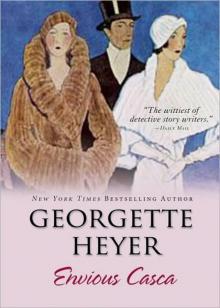 Envious Casca
Envious Casca Behold, Here's Poison
Behold, Here's Poison Arabella
Arabella The Nonesuch
The Nonesuch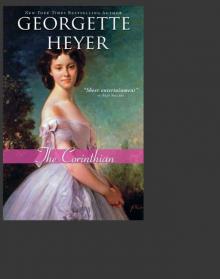 The Corinthian
The Corinthian Jennifer Kloester
Jennifer Kloester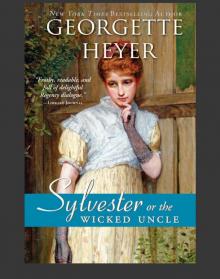 Sylvester
Sylvester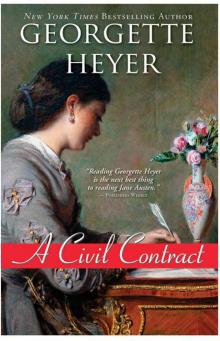 A Civil Contract
A Civil Contract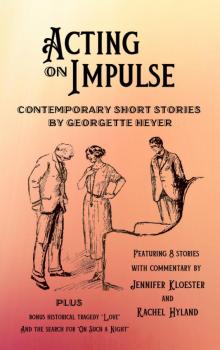 Acting on Impulse
Acting on Impulse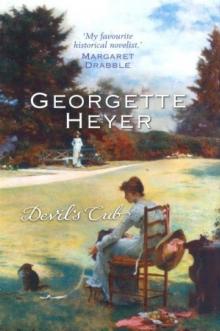 Devil’s Cub at-2
Devil’s Cub at-2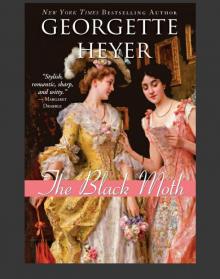 Black Moth
Black Moth Grand Sophy
Grand Sophy Instead of the Thorn
Instead of the Thorn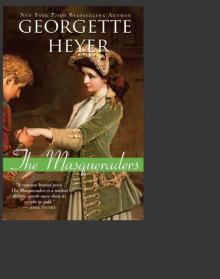 Masqueraders
Masqueraders Corinthian
Corinthian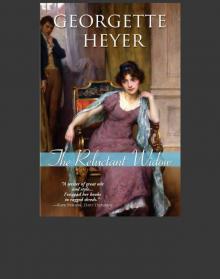 Reluctant Widow
Reluctant Widow